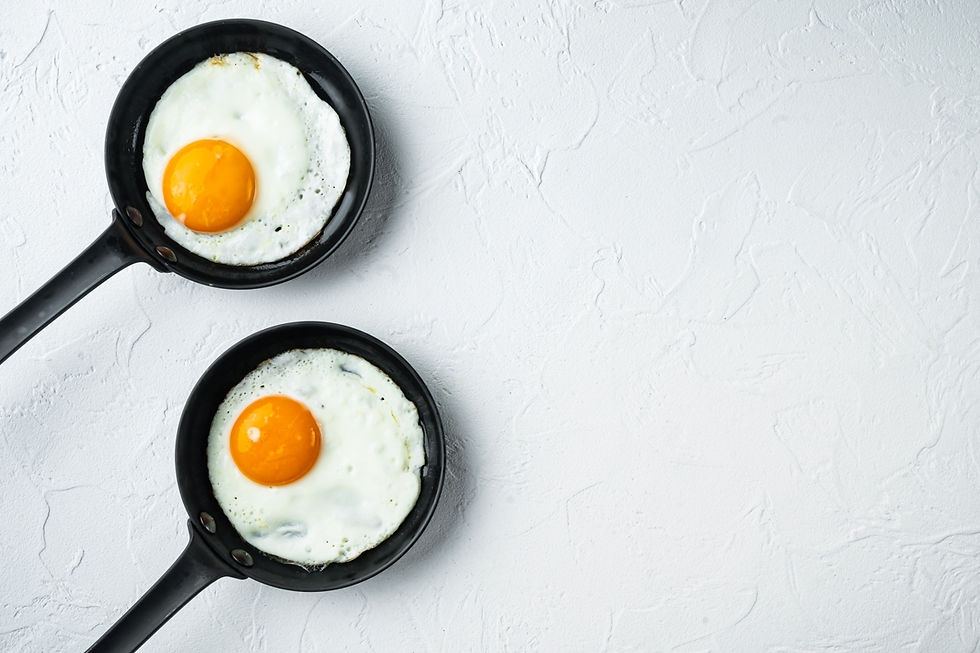Weight Loss - Use A Segmented Dinner Plate for Correct Ratios
- samsilvester1
- May 27
- 4 min read
A healthy balanced diet is easy to achieve when you utilize the right ratios of proteins, complex carbohydrates, healthy fats, along with a generous serving of vegetables and salads. This approach not only supports overall health but also helps in maintaining an ideal weight and enhancing energy levels throughout the day.
When planning your meals for lunch and dinner, it is essential to visualize your plate as a canvas where half of it is dedicated to a vibrant array of vegetables or a fresh salad. This colourful assortment not only provides a plethora of vitamins and minerals essential for bodily functions but also increases your fibre intake significantly.
Fibre plays a crucial role in digestion, helps regulate blood sugar levels, and keeps you feeling satiated for longer periods, which can be particularly beneficial for weight management. Additionally, filling up on these low-calorie foods allows you to enjoy larger portions without the concern of excessive calorie consumption, making it easier to stick to your dietary goals.
In terms of the remaining space on your plate, allocating just a quarter for complex carbohydrates is a strategic choice. This means that instead of overindulging in pasta, bread, or other refined grains, you can focus on healthier, whole-grain options that provide sustained energy. Complex carbohydrates, such as quinoa, brown rice, or whole-wheat pasta, are not only more nutritious but also help in stabilizing blood sugar levels, preventing the energy crashes often associated with simple carbohydrates. By keeping this portion controlled, you can enjoy the benefits of these foods without the risk of overfilling your plate, which can lead to unwanted weight gain and other health issues.
Moreover, the final quarter of your plate should be reserved for high-quality proteins and healthy fats. Incorporating lean proteins such as chicken, fish, legumes, or tofu is vital as they are essential for muscle repair, immune function, and overall growth and development. Healthy fats, found in foods like avocados, nuts, seeds, and olive oil, are equally important as they support brain health, hormone production, and the absorption of fat-soluble vitamins.
Your dinner plate should look something like this:

Protein can come from a variety of sources, including meat, fish, tofu, eggs, and cheese. Each of these options offers unique benefits and nutritional profiles. Fish, particularly fatty varieties like salmon and mackerel, provide not only protein but also essential omega-3 fatty acids, which are beneficial for heart health. Tofu serves as a versatile plant-based protein option, rich in iron and calcium, making it a great choice for vegetarians and vegans. Eggs are another complete protein source, containing all nine essential amino acids, along with vitamins and minerals. Cheese, while also high in protein, can be higher in fat and calories, so it's best consumed in moderation.
Complex carbohydrates are vital for providing sustained energy and can be found in foods such as brown rice, brown pasta, wholemeal bread, pulses, potatoes, and sweet potatoes. Brown rice and whole grain pasta are excellent alternatives to their white counterparts, offering more fibre and nutrients. Wholemeal bread, made from whole grains, retains the bran and germ, which are rich in fibre and essential nutrients. Pulses, including lentils, chickpeas, and various beans, are not only high in complex carbohydrates but also packed with protein and fibre, making them incredibly filling and nutritious. Potatoes and sweet potatoes are versatile starchy vegetables that can be prepared in numerous ways, offering vitamins, minerals, and fibre. Starchy vegetables like sweetcorn and butternut squash also contribute to a balanced diet, providing additional vitamins and antioxidants.
Vegetables can encompass a wide array of non-starchy options as well as various salad ingredients. Non-starchy vegetables, such as leafy greens, broccoli, bell peppers, and zucchini, are low in calories but high in essential vitamins, minerals, and antioxidants. Incorporating a colourful variety of vegetables into your meals not only enhances flavour and texture but also ensures a broad spectrum of nutrients. Salads, which can include a mix of these non-starchy vegetables, can be a refreshing and nutritious addition to any meal, providing hydration and fibre while being low in calories.
In addition to the aforementioned food groups, it is important to incorporate healthy fats into your diet. Healthy fats can be sourced from extra virgin olive oil, which is rich in monounsaturated fats and antioxidants, making it a heart-healthy choice. Nuts and seeds, such as almonds, walnuts, chia seeds, and flaxseeds, are not only a great source of healthy fats but also provide protein and fibre, contributing to overall satiety. Avocado is another excellent source of healthy fats, packed with vitamins and minerals, and can be easily added to salads, spreads, or smoothies for added creaminess and flavour.
When planning meals, particularly those centered around pasta or rice, such as chili or risotto, it is essential to keep these ratios in mind. Aim for a balanced plate where the rice or pasta constitutes only a quarter of the overall meal. This approach allows for a greater emphasis on protein, vegetables, and healthy fats, ensuring a well-rounded and nutritious meal that supports overall health and wellness.
By maintaining these proportions, you can enjoy your favourite dishes while still adhering to a balanced dietary framework.



Comments